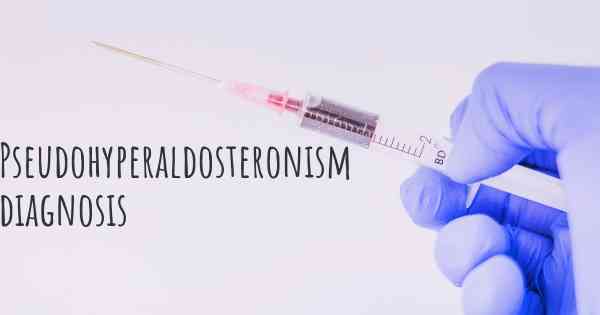How is Pseudohyperaldosteronism diagnosed?
See how Pseudohyperaldosteronism is diagnosed. Which specialists are essential to meet, what tests are needed and other useful information for the diagnosis of Pseudohyperaldosteronism

Pseudohyperaldosteronism, also known as apparent mineralocorticoid excess (AME), is a rare genetic disorder that mimics the symptoms of primary hyperaldosteronism. It is characterized by excessive salt retention, low potassium levels, and high blood pressure. Diagnosing pseudohyperaldosteronism involves a comprehensive evaluation of the patient's medical history, physical examination, laboratory tests, and genetic analysis.
Medical history: The doctor will inquire about the patient's symptoms, family history, and any previous diagnoses or treatments. It is important to mention any episodes of low potassium levels, high blood pressure, or excessive salt cravings.
Physical examination: The doctor will perform a thorough physical examination, including measuring blood pressure, checking for signs of fluid retention, and assessing any abnormal physical features.
Laboratory tests: Several laboratory tests are crucial in diagnosing pseudohyperaldosteronism. These may include:
- Blood tests: Blood samples are analyzed to measure electrolyte levels, including sodium, potassium, and aldosterone. In pseudohyperaldosteronism, aldosterone levels are typically elevated.
- Urine tests: Urine samples are collected to measure electrolyte levels and assess the ratio of sodium to potassium. In pseudohyperaldosteronism, the ratio is usually high.
- Genetic analysis: Genetic testing is essential to confirm the diagnosis of pseudohyperaldosteronism. It involves analyzing the patient's DNA for mutations in the genes responsible for the condition, such as the HSD11B2 gene.
Additional tests: In some cases, additional tests may be performed to rule out other conditions and evaluate the extent of organ damage. These may include imaging studies, such as ultrasound or CT scans, to assess the kidneys and adrenal glands.
Once a diagnosis of pseudohyperaldosteronism is confirmed, appropriate management strategies can be implemented. Treatment typically involves medications to control blood pressure and potassium supplementation to correct low potassium levels. Regular monitoring and follow-up visits are essential to ensure optimal management of the condition.








